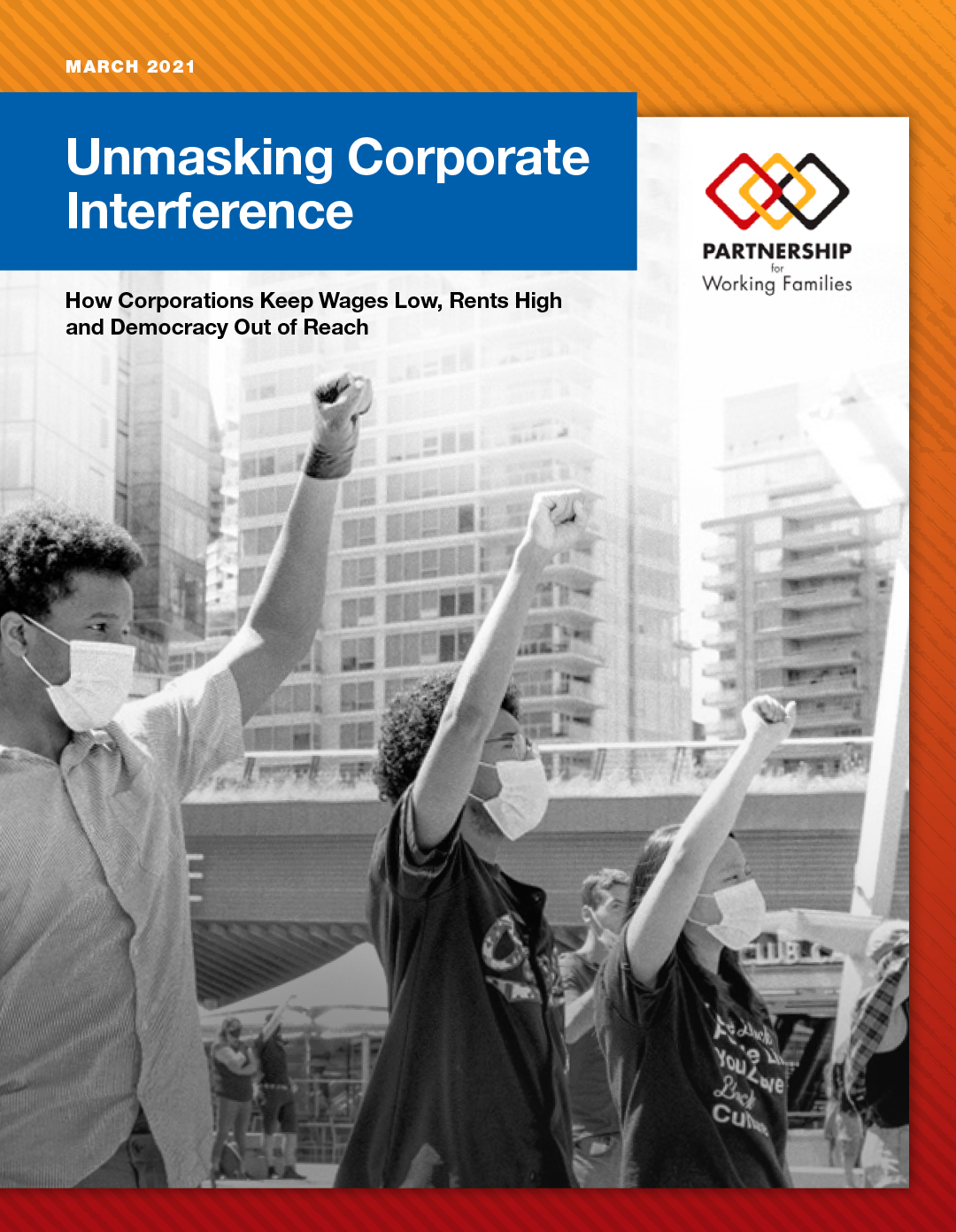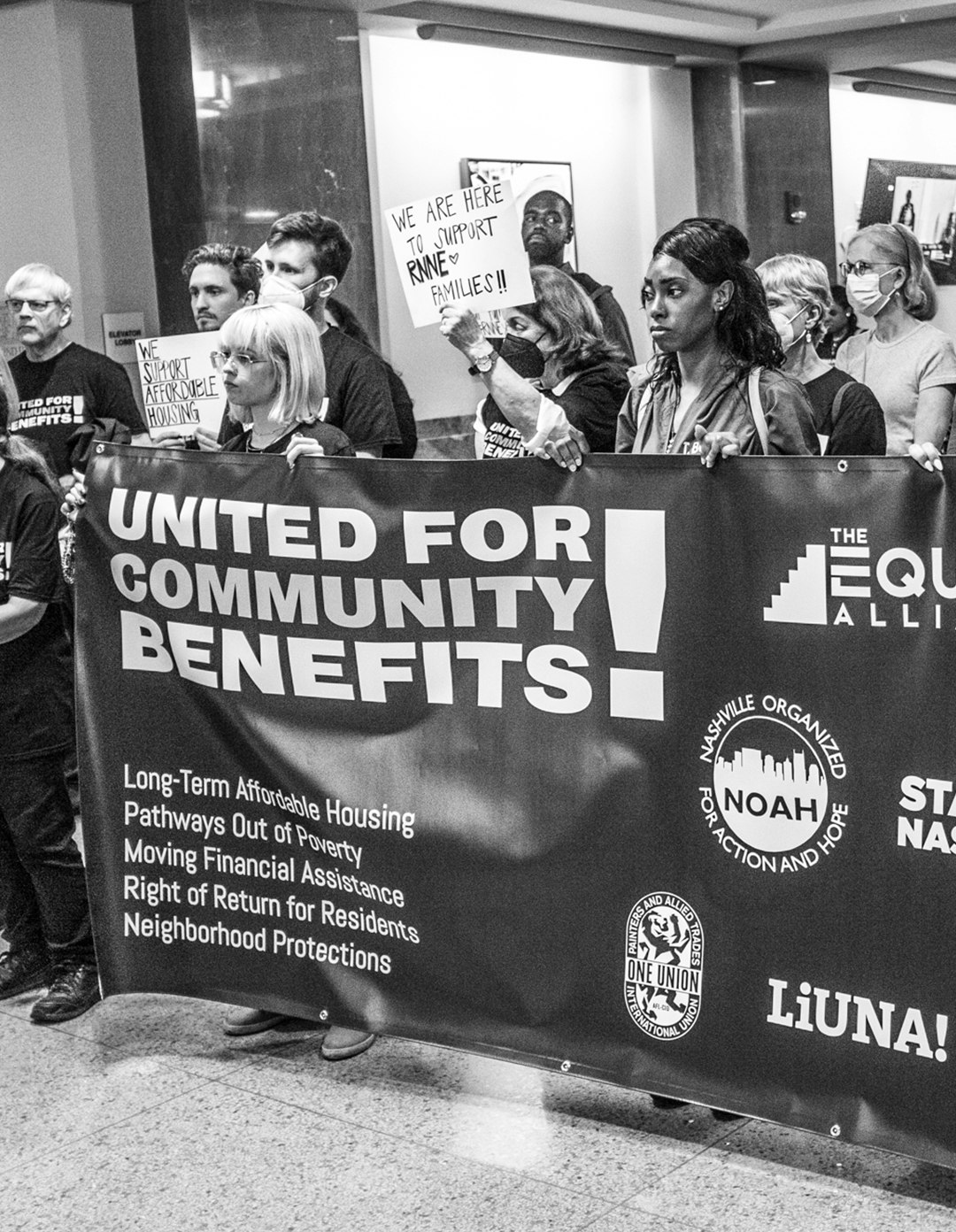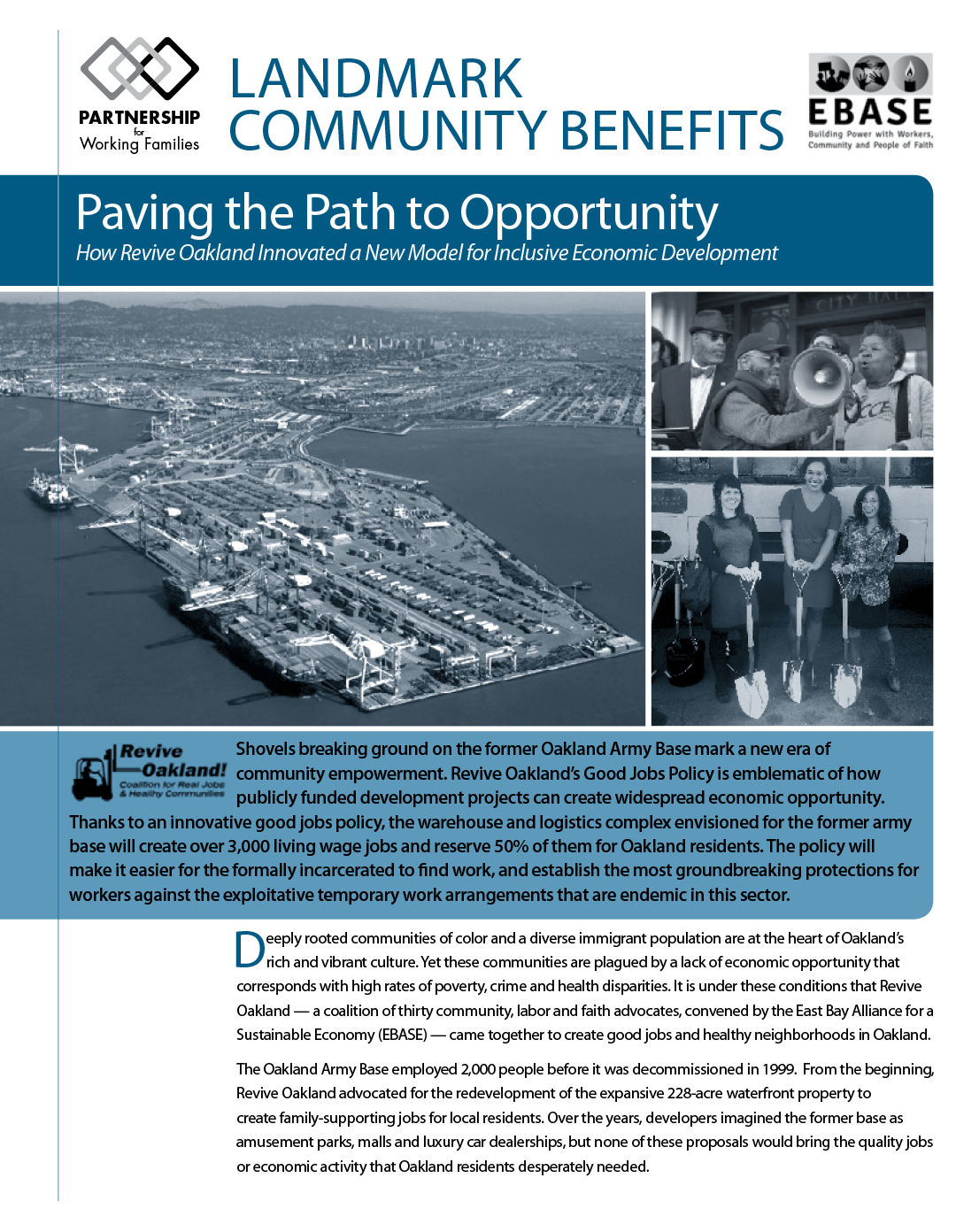A community impact report (CIR) is a policy tool that reforms the development process in two ways.
- CIRs create a process through which everyone—community leaders, developers and local officials—has access to vital information regarding proposed projects. Too often, community leaders find themselves excluded from the process and information about projects, developers are reluctant to share too much information about their projects and local officials struggle with competing interests and demands. The results of this failed communication are development projects that meet the needs of few and cost the majority a great deal. Requiring CIRs facilitates equal access to comprehensive information on proposed projects.
- This policy tool creates a formal process for considering the public costs and benefits of proposed projects. Too often development projects are approved without considering the impact they will have on the local traffic, quality of life, job market, etc. CIRs provide a mechanism for documenting and considering all of the public costs and benefits of proposed projects to inform public approval and subsidy decisions.
While CIR ordinances and policies vary, they all create a process and information for evaluating proposed development projects. The CIR process typically begins with a report, compiled by the developer, that assesses the fiscal, employment, housing, neighborhood and smart-growth impacts of a proposed project. In states or on projects that don’t require environmental impact review, those impacts may be included as well. The report is submitted to local officials (or other decision makers) for review during the early stages of the project. The CIR is also made available to the public so that community members can review the impacts of the proposed project and provide feedback at public hearings.
This process provides benefits for all stakeholders. Developers are given an opportunity to report on the positive contributions of their project, as well as any potentially negative impacts. This process also enables developers to receive productive feedback from the community. Decision makers are able to make more informed decisions regarding development projects and build a collaborative relationship with the community. Community members gain greater access to the development process.
Across the country, community coalitions have won ordinances requiring developers to produce community impact reports. CIR ordinances come in many forms and apply to different jurisdictions. Most commonly, CIR measures are passed at the city or county level, although there are also state-level policies. Each measures has a threshold or trigger at which a CIR is required (for example the square footage of a retail store, number of units of market-rate housing or subsidy size). There are also CIR ordinances that apply specifically to big-box retail stores.







